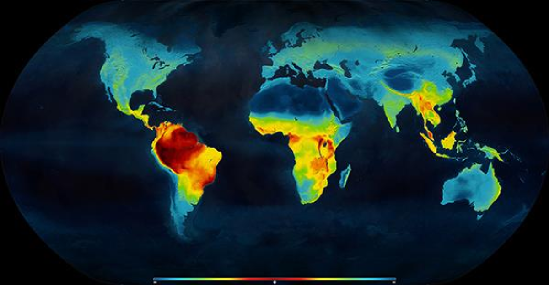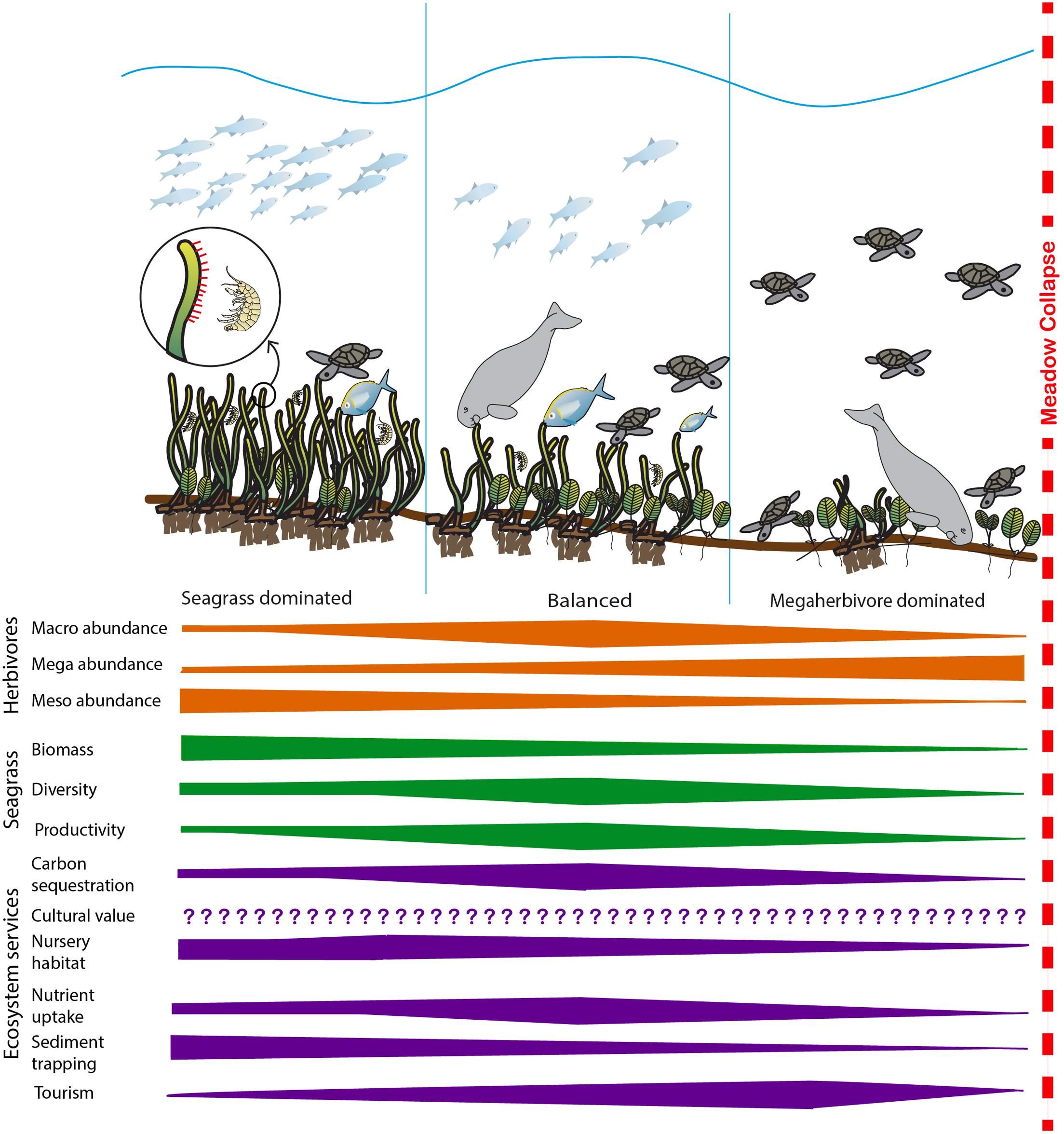|
Macroecology
Macroecology is the subfield of ecology that deals with the study of relationships between organisms and their environment at large spatial scales to characterise and explain statistical patterns of abundance, distribution and diversity. The term was coined in a small monograph published in Spanish in 1971 by Guillermo Sarmiento and Maximina Monasterio, two Venezuelan researchers working in tropical savanna ecosystemsLevin, S. A., Carpenter, S. R., Godfray, H. C. J., Kinzig, A. P., Loreau, M., Losos, J. B., ... & Wilcove, D. S. (Eds.). (2012). The Princeton guide to ecology. Princeton University Press. and later used by James Brown of the University of New Mexico and Brian Maurer of Michigan State University in a 1989 paper in ''Science''. Macroecology approaches the idea of studying ecosystems using a "top down" approach. It seeks understanding through the study of the properties of the system as a whole; Kevin Gaston and Tim Blackburn make the analogy to seeing the forest for t ... [...More Info...] [...Related Items...] OR: [Wikipedia] [Google] [Baidu] |
James Brown (ecologist)
James Hemphill Brown (born 1942) is an American biologist and academic. He is an ecologist, and a Distinguished Professor of Biology at the University of New Mexico. His work has focused on 3 distinct aspects of ecology: 1) the population and community ecology of rodents and harvester ants in the Chihuahuan Desert, 2) large-scale questions relating to the distribution of body size, abundance and geographic range of animals, leading to the development of the field of macroecology, a term that was coined in a paper Brown co-authored with Brian Maurer of Michigan State University. and 3) the Metabolic Theory of Ecology. In 2005 he was awarded the Robert H. MacArthur Award by the Ecological Society of America for his work, including his work toward a metabolic theory of ecology. Between 1969 and 2011 he was awarded over $18.4 million in grants for his research. Education and honors Education Brown received a bachelors with honors in 1963 before obtaining his PhD in 1967: *Bache ... [...More Info...] [...Related Items...] OR: [Wikipedia] [Google] [Baidu] |
Latitudinal Gradients In Species Diversity
Species richness, or biodiversity, increases from the poles to the tropics for a wide variety of terrestrial and marine organisms, often referred to as the latitudinal diversity gradient. The latitudinal diversity gradient is one of the most widely recognized patterns in ecology. It has been observed to varying degrees in Earth's past. A parallel trend has been found with elevation ( elevational diversity gradient), though this is less well-studied. Explaining the latitudinal diversity gradient has been called one of the great contemporary challenges of biogeography and macroecology (Willig et al. 2003, Pimm and Brown 2004, Cardillo et al. 2005). The question "What determines patterns of species diversity?" was among the 25 key research themes for the future identified in 125th Anniversary issue of ''Science'' (July 2005). There is a lack of consensus among ecologists about the mechanisms underlying the pattern, and many hypotheses have been proposed and debated. A recent revi ... [...More Info...] [...Related Items...] OR: [Wikipedia] [Google] [Baidu] |
Ecology
Ecology () is the study of the relationships between living organisms, including humans, and their physical environment. Ecology considers organisms at the individual, population, community, ecosystem, and biosphere level. Ecology overlaps with the closely related sciences of biogeography, evolutionary biology, genetics, ethology, and natural history. Ecology is a branch of biology, and it is not synonymous with environmentalism. Among other things, ecology is the study of: * The abundance, biomass, and distribution of organisms in the context of the environment * Life processes, antifragility, interactions, and adaptations * The movement of materials and energy through living communities * The successional development of ecosystems * Cooperation, competition, and predation within and between species * Patterns of biodiversity and its effect on ecosystem processes Ecology has practical applications in conservation biology, wetland management, natural resour ... [...More Info...] [...Related Items...] OR: [Wikipedia] [Google] [Baidu] |
Natural Environment
The natural environment or natural world encompasses all living and non-living things occurring naturally, meaning in this case not artificial. The term is most often applied to the Earth or some parts of Earth. This environment encompasses the interaction of all living species, climate, weather and natural resources that affect human survival and economic activity. The concept of the ''natural environment'' can be distinguished as components: * Complete ecological units that function as natural systems without massive civilized human intervention, including all vegetation, microorganisms, soil, rocks, atmosphere, and natural phenomena that occur within their boundaries and their nature. * Universal natural resources and physical phenomena that lack clear-cut boundaries, such as air, water, and climate, as well as energy, radiation, electric charge, and magnetism, not originating from civilized human actions. In contrast to the natural environment is the built envir ... [...More Info...] [...Related Items...] OR: [Wikipedia] [Google] [Baidu] |
University Of New Mexico
The University of New Mexico (UNM; es, Universidad de Nuevo México) is a public research university in Albuquerque, New Mexico. Founded in 1889, it is the state's flagship academic institution and the largest by enrollment, with over 25,400 students in 2021. UNM comprises twelve colleges and schools, including the only law school in New Mexico. It offers 94 baccalaureate, 71 masters, and 37 doctoral degrees. The main campus spans in central Albuquerque, with branch campuses in Gallup, Los Alamos, Rio Rancho, Taos, and Los Lunas. UNM is classified among "R1: Doctoral Universities – Very high research activity", and spent over $243 million on research and development in 2021, ranking 103rd in the nation. UNM's NCAA Division I program ( FBS for football) offers 16 varsity sports; known as the Lobos, the teams compete in the Mountain West Conference and have won national championships in skiing and cross country running. The official school colors are cherry ... [...More Info...] [...Related Items...] OR: [Wikipedia] [Google] [Baidu] |
Michigan State University
Michigan State University (Michigan State, MSU) is a public university, public Land-grant university, land-grant research university in East Lansing, Michigan. It was founded in 1855 as the Agricultural College of the State of Michigan, the first of its kind in the United States. It is considered a Public Ivy, or a public institution which offers an academic experience similar to that of an Ivy League university. After the introduction of the Morrill Land-Grant Acts, Morrill Act in 1862, the state designated the college a land-grant institution in 1863, making it the first of the land-grant colleges in the United States. The college became coeducational in 1870. In 1955, the state officially made the college a university, and the current name, Michigan State University, was adopted in 1964. Today, Michigan State has the largest undergraduate enrollment among Michigan's colleges and universities and approximately 634,300 living alums worldwide. The university is a member of the ... [...More Info...] [...Related Items...] OR: [Wikipedia] [Google] [Baidu] |
Science (journal)
''Science'', also widely referred to as ''Science Magazine'', is the peer-reviewed academic journal of the American Association for the Advancement of Science (AAAS) and one of the world's top academic journals. It was first published in 1880, is currently circulated weekly and has a subscriber base of around 130,000. Because institutional subscriptions and online access serve a larger audience, its estimated readership is over 400,000 people. ''Science'' is based in Washington, D.C., United States, with a second office in Cambridge, UK. Contents The major focus of the journal is publishing important original scientific research and research reviews, but ''Science'' also publishes science-related news, opinions on science policy and other matters of interest to scientists and others who are concerned with the wide implications of science and technology. Unlike most scientific journals, which focus on a specific field, ''Science'' and its rival ''Nature'' cover the full ra ... [...More Info...] [...Related Items...] OR: [Wikipedia] [Google] [Baidu] |
Ecosystem
An ecosystem (or ecological system) consists of all the organisms and the physical environment with which they interact. These biotic and abiotic components are linked together through nutrient cycles and energy flows. Energy enters the system through photosynthesis and is incorporated into plant tissue. By feeding on plants and on one another, animals play an important role in the movement of matter and energy through the system. They also influence the quantity of plant and microbial biomass present. By breaking down dead organic matter, decomposers release carbon back to the atmosphere and facilitate nutrient cycling by converting nutrients stored in dead biomass back to a form that can be readily used by plants and microbes. Ecosystems are controlled by external and internal factors. External factors such as climate, parent material which forms the soil and topography, control the overall structure of an ecosystem but are not themselves influenced by the ecosyst ... [...More Info...] [...Related Items...] OR: [Wikipedia] [Google] [Baidu] |
Wildlife
Wildlife refers to undomesticated animal species, but has come to include all organisms that grow or live wild in an area without being introduced by humans. Wildlife was also synonymous to game: those birds and mammals that were hunted for sport. Wildlife can be found in all ecosystems. Deserts, plains, grasslands, woodlands, forests, and other areas, including the most developed urban areas, all have distinct forms of wildlife. While the term in popular culture usually refers to animals that are untouched by human factors, most scientists agree that much wildlife is affected by human activities. Some wildlife threaten human safety, health, property, and quality of life. However, many wild animals, even the dangerous ones, have value to human beings. This value might be economic, educational, or emotional in nature. Humans have historically tended to separate civilization from wildlife in a number of ways, including the legal, social, and moral senses. Some animals, how ... [...More Info...] [...Related Items...] OR: [Wikipedia] [Google] [Baidu] |
Species Richness
Species richness is the number of different species represented in an ecological community, landscape or region. Species richness is simply a count of species, and it does not take into account the abundances of the species or their relative abundance distributions. Species richness is sometimes considered synonymous with species diversity, but the formal metric species diversity takes into account both species richness and species evenness. Sampling considerations Depending on the purposes of quantifying species richness, the individuals can be selected in different ways. They can be, for example, trees found in an inventory plot, birds observed from a monitoring point, or beetles collected in a pitfall trap. Once the set of individuals has been defined, its species richness can be exactly quantified, provided the species-level taxonomy of the organisms of interest is well enough known. Applying different species delimitations will lead to different species richness value ... [...More Info...] [...Related Items...] OR: [Wikipedia] [Google] [Baidu] |
Abundance (ecology)
In ecology, local abundance is the relative representation of a species in a particular ecosystem. It is usually measured as the number of individuals found per sample. The ratio of abundance of one species to one or multiple other species living in an ecosystem is referred to as relative species abundances. Both indicators are relevant for computing biodiversity. A variety of sampling methods are used to measure abundance. For larger animals, these may include spotlight counts, track counts and roadkill counts, as well as presence at monitoring stations. In many plant communities the abundances of plant species are measured by plant cover, i.e. the relative area covered by different plant species in a small plot. Abundance is in simplest terms usually measured by identifying and counting every individual of every species in a given sector. It is common for the distribution of species to be skewed so that a few species take up the bulk of individuals collected. Relative spec ... [...More Info...] [...Related Items...] OR: [Wikipedia] [Google] [Baidu] |

.jpg)

.jpg)



.jpg)
